Bank Reconciliation Challenges and Solutions: The Textbook Example
Bank reconciliation is one thing that companies cannot function without nowadays, mainly because there is hardly a business that does not interact with financial institutions. While bank reconciliation is needed in order to assure control and healthy finances, it is also tedious to a level that often discourages and leaves you drowned in details that obscure the original intent of the whole process. It is a daily routine for thousands of companies and a heavily regulated reality for a number of financial institutions and organizations.
We, at ReconArt, have seen every bit and piece of the process and have worked hard to find a solution to the old and new problems faced by our clients when it comes to bank reconciliation.
What is bank reconciliation?
Bank reconciliation, by definition, is supposed to be straightforward. It is simply the process of matching the transactional data coming from a bank statement with the relevant internal company data (retrieved from the cash account). The aim is to verify that each transaction in the bank statement is consistent and comparable to the internal records as presented in the company’s accounts.
So where are the problems coming from and why companies end up with a list of complicated, time-consuming activities to perform? The reasons are various but the main issue stems from the fact that they usually occur simultaneously to completely mess up the data and make the matching particularly complex and prone to errors.
Bank reconciliation challenges: process limitations
Numerous banking partners, bank accounts, currency differences
Companies usually use more than one bank for different processes and transactions. Transaction Banking Survey 2016 shows that only 7% of corporates have chosen to work with only one banking partner. Sometimes the bank is the same but there is still a set of accounts to serve different purposes and provide for better visibility.
Then come the different currencies used for the accounts and the number here can start from just a few and reach double digits. Finally, it turns out that the bank statements received for the purpose of reconciliation are numerous and certainly not easy to compare with the internal records.
Different bank statement file formats
Living in a digital world and having a bunch of different systems and applications makes work much easier, however they produce output in various formats even when we look at internal data only. When external sources are added to the picture, the number of formats grows further and the comparability is immediately reduced.
In bank reconciliation this is an issue faced by every business, no matter of the size and industry. For instance, probably the most common financial data communication standard globally is the SWIFT family, such as MT and MX messages. But depending on geography and industry specifics, a business may source banking information in ACH, FIRDS or BAI formats, among many others.
High transaction volumes and timely reconciliations
In some cases the bank reconciliation itself is not that difficult to perform as the input data is of good quality and the principles are simple. Then another issue arises – the volumes to be matched. Hundreds and thousands of transactions pile up daily. These need to be reconciled timely and correctly and once this is completed, the resulting exceptions need further attention, processing and resolution. It takes a huge amount of effort if done manually and requires utmost attention and preciseness at every step.
Bank reconciliation challenges: typical causes for unmatched transactions
So far what is described above depicts the actual situation for most companies but focuses mainly on the process limitations and the issues that emerge from the initial setup. Another huge area of challenges is the quality of the data and the reasons for having unmatched transactions. As ultimately the goal is no variance and no outstanding items, the fact that a big number of data entries cannot find a pair is even more bothersome and has to do with a whole new bunch of reasons.
Time differences: the lag between the GL and the bank statement
It is not unusual that transactions are not reflected timely in the bank statements or in the internal systems, especially around period end. This certainly leads to unmatched items. Transaction ageing in the course of investigation of outstanding records becomes essential for tracking delays.
Bank charges & payment fees treatment in account reconciliation
That alter the amounts of the transactions – it is common that fees are applied to transactions either by the bank or other intermediaries along the way and are automatically added to the transaction amounts. That, however, hinders the matching process as the sum in the bank statement cannot be paired with the one in the internal records.
Currency conversions between the bank statement and the internal system
When a company opens an account in one currency but receives payments in other currencies, that immediately leads to mismatches between the bank documents and the internal systems. Getting to link those completely different figures is quite of a challenge.
Splitting bulk amounts in the bank statement reconciliation
Sometimes transactions are aggregated and presented in the bank statements as bulk amounts instead of individual records. Matching such transactions requires advanced analysis.
Complex transaction relations in bank reconciliation
Complicated internal processes and various data sources inevitably lead to intricate transaction relations of different kinds – one-to-one, one-to-many, many-to-many. Dealing with such cases involves sophisticated logic.
Having in mind all these challenges, it is clear why bank reconciliation requires a good deal of attention and effort to do it correctly and get reliable results. After all, at period-end all transactions need to be reconciled and all exception items resolved. That is why most companies decide to use specialized tools for the purpose and to automate as much of the process as possible. The added value of choosing this option is huge and spreads across a number of different areas.
Bank reconciliation solutions: automated transaction matching
ReconArt™ is a solution designed and developed to suit perfectly any reconciliation need, no matter of the industry, the company size or the volume of transactions. Bank reconciliation is one of the main areas where our clients require help and therefore we support the process for almost each of them. We have gained vast knowledge and experience in the field over the years and have the capacity to handle even the most complicated cases, not only because we provide the right technology but also because we offer expertise with the processes and best practices.
A few particular features of ReconArt™ make a difference in the world of reconciliation tools and assert its suitability for bank reconciliation.
The powerful matching engine
ReconArt™ is built around the matching engine so it offers close to endless capabilities to reconcile – huge volumes , complex relationships, any type of data (numeric or not) and tens of sources and formats are handled flawlessly by the tool. Our clients reconcile thousands of transactions daily and this is not a real challenge as ReconArt™ is designed exactly with these features in mind. In this way, naturally, most bank reconciliation issues are resolved.
Configurable match rules for high success matching rates
It is the users themselves who can easily create the matching rules and update or change them immediately when required. ReconArt™ is business user oriented and very intuitive so it eliminates the need for constant change requests and the whole change management process is owned solely by the users. This adds а good deal of speed, self-sufficiency and flexibility within every process to be handled and this is also valid for bank reconciliation.
Full automation of manual bank reconciliation operations
Everything can be automated with ReconArt™– the import, the data enrichment, the reconciliation, the exceptions management and the export are scheduled as required and performed by the system. Nothing is left for manual handling apart from the items which require further investigation or particular actions. For most of our clients that makes the biggest difference. Rob Harley, Director of IT in Rain City Capital gives a good summary of what has changed with the implementation of ReconArt™:
Today, we come in in the morning and run an auto match, do a couple of manual operations, and we’re done with the reconciliation for the previous day. It takes us about 15 minutes. This used to be a 50-hour effort once a month before, so we’re in a great place.
ETL capabilities and ERP integration
Because of the advanced ETL features integrated in the tool, any transaction complexity can be overpassed. Moreover, it provides room for alternative options and flexibility. Bank reconciliation is exactly an area where problems and limitations can be overcome with solutions that offer freedom for data modifications and optimizations at basic level.
ReconArt™ allows for extraction, intuitive data enrichment, transformation and further use and upload so that neither the input data, nor specific output requirements obstruct our client’s work. ReconArt™ can be integrated with existing ERPs or other legacy systems – with some of them full integration is already developed and with others it is based on file export and import.
Complex analytics, reporting, control and auditability of bank reconciliations
When the reconciliation process is designed to comply with best practices and the data it produces is reliable, that leads to a number of other beneficial outcomes, audit readiness and visibility above all. The configurable workflows guarantee transparency at each step of the process.
The reporting features that come with ReconArt™ provide an improved insight into the organization’s financial position and allow for further analysis and actions when risks are identified. Reports are preset or configurable and cover data from all modules, as well as at system level. Errors, dependencies, and deficiencies pop up at a glance. Having at hand a good statistical overview combined with granular audit trail is the final step that completes the bank reconciliation process.
After all, any obstacle in bank reconciliation can get its relevant solution – provided you are equipped with the proper tools and knowledge. The extensive expertise and the constant feedback received from our clients serves for further product development. This empowers the ReconArt team to come up with a superior product with full-blown reconciliation functionalities catering for any need and every complexity. This proves to be very reassuring for both our clients and our experts.

 follow our blog
follow our blog
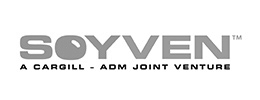

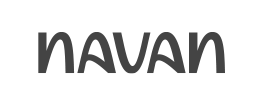






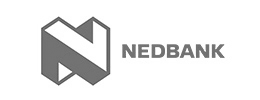


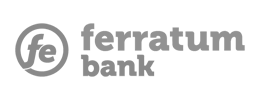


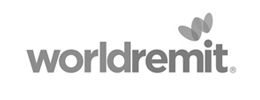






 Quick response
Quick response

